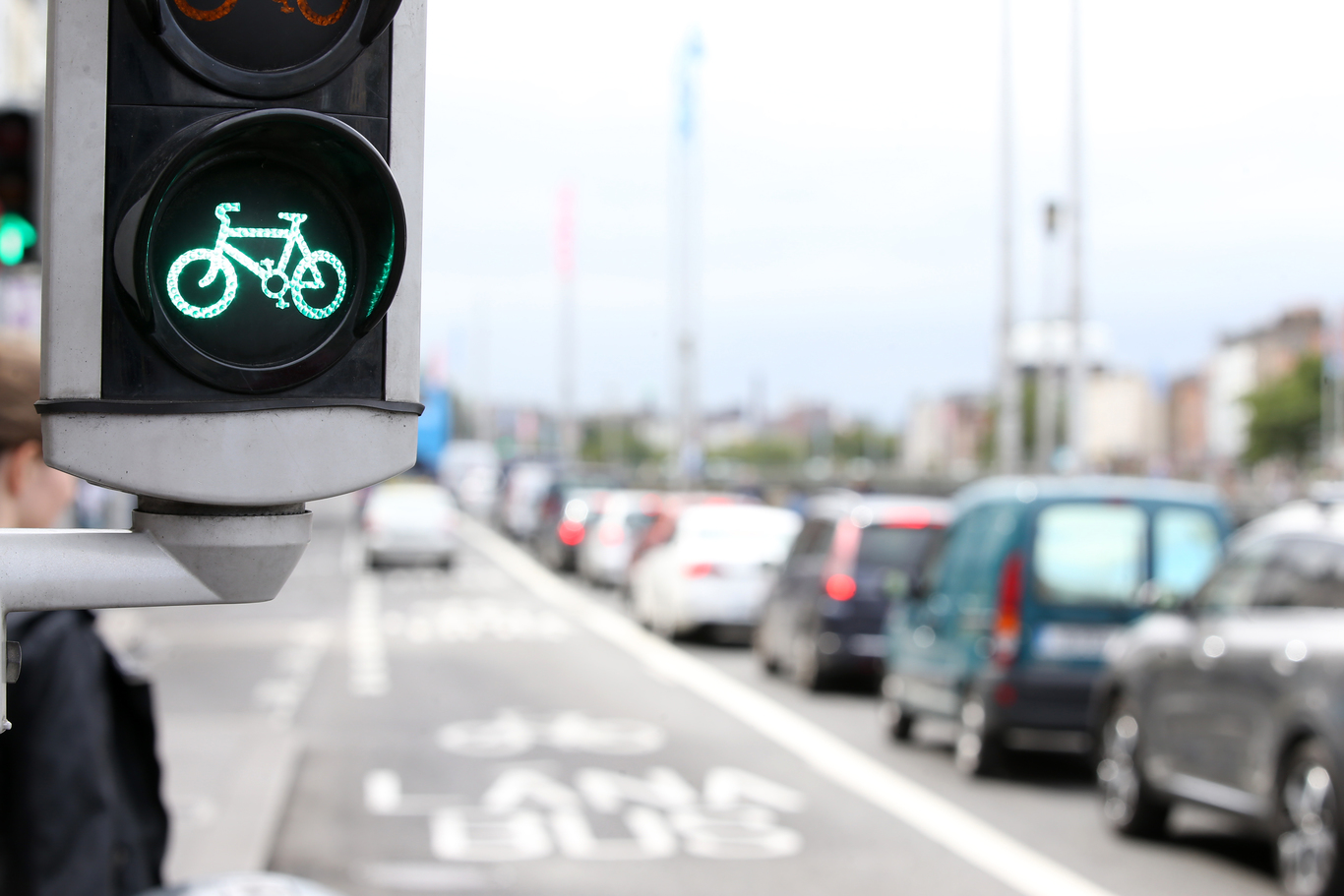Why safer cycling is an open goal for Dublin to fix its traffic problems
After housing, transport is the biggest issue for businesses in the city.
DARAGH RYAN, LUBY Maryori Arroyave Ramirez, Padraic Carney, Ryan McCarthy, Harry Boland – five people who are sadly no longer with us.
All of them were killed in the past 18 months while cycling in Dublin – all following a collision with a motor vehicle.
I’d list the names of those who have been seriously injured while pedalling around the city, but there wouldn’t be much room left to say anything else.
It’s a wonder that the list of five names isn’t longer. Anyone who has even tried cycling a short distance in Dublin will testify to that. But, sadly, it’s a list that is certain to grow over the coming months and years.
Until, that is, the powers that be finally wake up to the need to invest properly in the type of cycling infrastructure that Dubliners deserve.
Barely a week goes by in Dublin Chamber when we don’t get a call or an email or a comment from one of our member companies about Dublin’s transport issues.
After housing, it’s the biggest issue that businesses complain to us about. It’s also the second biggest issue that employers are hearing about from staff – again, after the availability and affordability of accommodation.
Solutions
Dublin’s congestion woes won’t be solved overnight. There is no one project or change that will act as a silver bullet. Dublin needs solutions for both the short- and long-term.
In recent months, the National Transport Authority has published a number of plans which have the potential to transform how people move around Dublin for the better.
MetroLink, a 26km underground rail line that will allow people to travel between Swords and the city’s southside in around 20 minutes, is arguably the most exciting of those plans.
Then there’s Bus Connects, a network of fast bus-dedicated corridors that will see buses able to sweep in and out of the city in around half the time it currently takes.
Frustratingly, plans for Dart Underground – arguably the most important transport project for Dublin currently and one we’ve been talking about since 1970 – has been kicked down the road by the government until the 2030s.
All three of these projects need to be built and should be progressed without delay.
Of course, all of them will take up to 10 years to be delivered. So what do we do in the meantime? Improvements to the existing bus network, upgrades to the Dart and commuter lines, and longer and more frequent Luas trams are some solutions which can be implemented relatively quickly.
There’s also an open goal for the city to greatly improve from a cycling and walkability point of view.
Fear
Dubliners are turning to cycling in their droves. Since 2008, the number of people commuting into the city by bike has doubled to more than 12,000 every day.
If you want physical proof of that, spend a few minutes on the city’s North Quays on a weekday morning as dozens of cyclists flow into the city. Or wander through the vicinity of Trinity College and see the swathes of bikes chained to every possible parking spot imaginable.
However, for the most part, this progress has not happened as a result of Dublin’s cycling infrastructure, but rather in spite of it. This needs to change. Workers in Dublin are increasingly looking at cycling, but feedback tells us they are too afraid to get on their bikes.
This feedback is coming from the city’s workers and businesses. That’s why Dublin Chamber has decided to team up with the CyclingWorks Dublin campaign, encouraging the business community to pressure the government – and Transport Minister Shane Ross – to significantly increase the amount of money spent on safe cycling infrastructure in the capital.
Businesses are responding in kind, with more than 50 companies signed up to the initiative so far. And for good reason too.
‘Unsafe’
A survey of around 400 Dublin Chamber members last month found that more than two-thirds of firms believe that better cycling infrastructure in the city would be beneficial to their staff and to their business in general.
More than half of respondents said they had seen an increase in the number of staff cycling to and from work over the past 12 months.
Around one in 10 of the owners and managers surveyed said they themselves currently cycle to work on a ‘frequent’ basis, while 17% said they cycled to work ‘only occasionally’.
Of the 71% who said they did not cycle to work, one in four cited the fact that it was ‘unsafe’ as their reason for not doing so. A further 8% pointed to the lack of segregated cycle lanes.
The need for a proper cycling plan in Dublin is clear. Such plans have been central to cycling becoming so popular in cities in Denmark and the Netherlands.
Currently, around 6% of work commutes in Dublin are made by bike. In Copenhagen, that number exceeds 40%. Dublin Chamber believes that a 20% cycling share is possible in Dublin within 10 years, but only if we start investing properly in the cycling network.
The good news is that we don’t need to wait around for a cycling plan for Dublin to be developed. There’s one already there. Published in May 2013, all we have to do is blow the dust off it.
With cyclist numbers growing at such an impressive rate, why are we sitting on our hands? Increasing the amount of cycling is an open goal for Dublin – a city which is clogged with traffic on a daily basis.
Making Dublin safer for cycling will make the city more family-friendly and greatly improve the quality of life for Dubliners. It will also ensure more lives aren’t needlessly lost. Over to you, Minister Ross.
Graeme McQueen is head of public affairs at Dublin Chamber.






